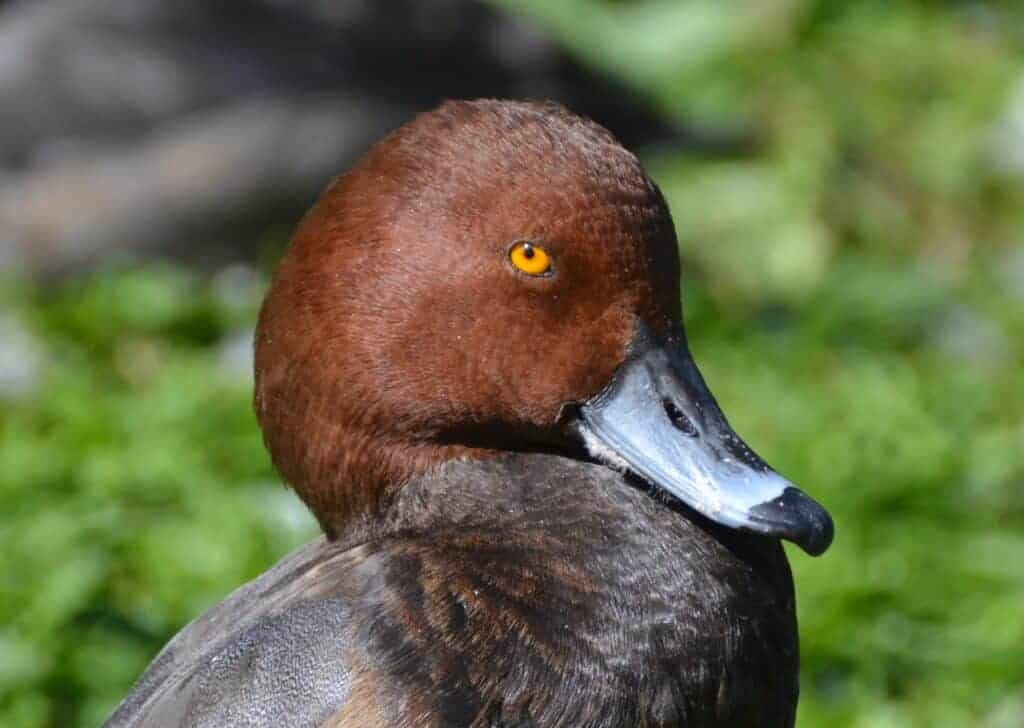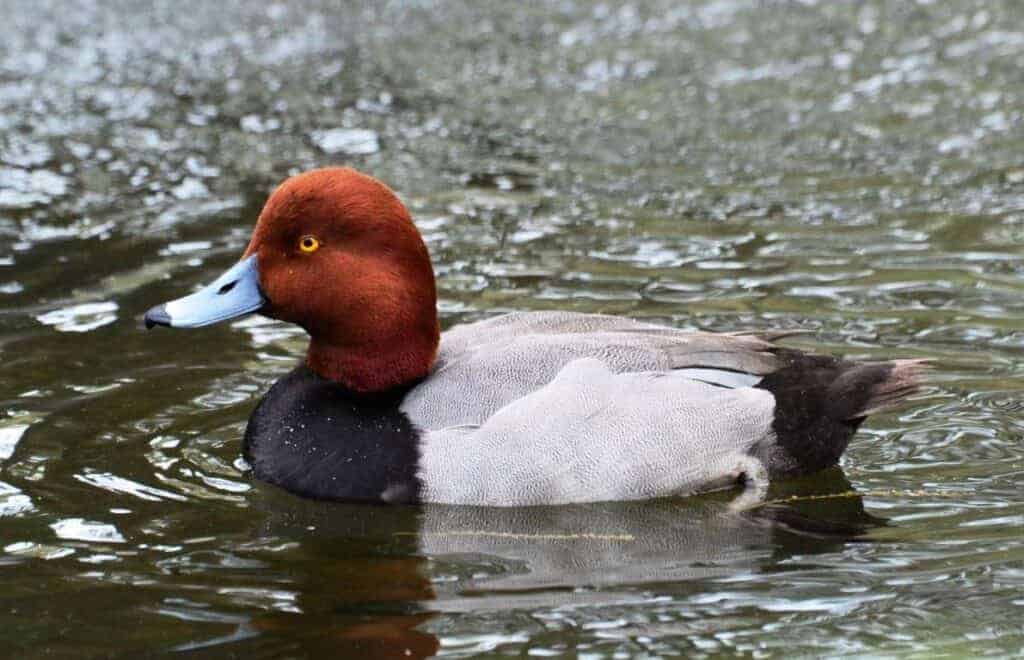Redhead

Aythya americana
The North American counterpart of the Common Pochard Aythya ferina, the Redhead breeds predominately in the prairie provinces of Canada, though increasing numbers now nest on the eastern seaboard. It winters across the United States, with vagrants occasionally reaching Europe. It takes a sharp eye to spot a Redhead drake in a flock of Pochard: the key features are size – it is larger and bulkier than a Pochard – and its darker plumage, while the bill has a black tip with a distinctive pale subterminal band.

Like the Pochard, the Redhead is a gregarious bird, invariably found in flocks outside the breeding season. Another similarity is the diet: this species is primarily vegetarian, diving for its food, though favouring shallow water. Though widely kept in captivity, the similarity to the Common Pochard means that they are scarce in UK collections, while there is a risk of hybridisation if kept with Common Pochard.
Though easy to keep in captivity, it can be a challenge persuading Redheads to breed. Clutch size is typically eight eggs, with incubation taking 25 days. In the wild, females frequently lay their eggs in the nests of other ducks, and particularly those of Canvasbacks Aythya valisineria.
FURTHER READING
Audubon, Guide to North American Birds Redhead
Cornell Lab, All About Birds Redhead
Ducks Unlimited, Conservation, Prairie Pothole Region
Hoak, E. (2003). Animal Diversity Web, Kids’ Inquiry of Diverse Species Redhead
Share this page